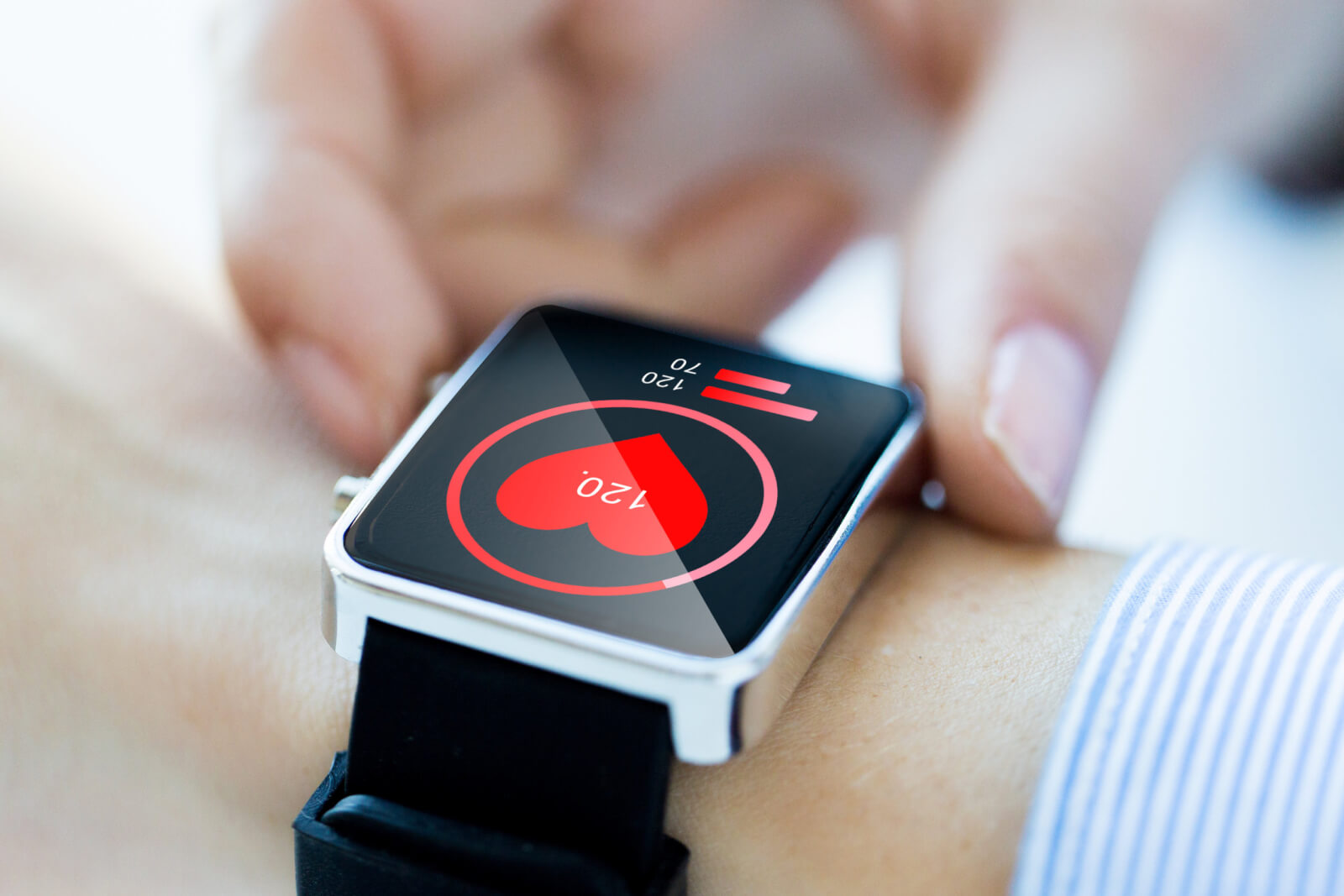Key Takeaways:
- Safeguarding user data is not optional – A single breach can cost businesses millions of dollars and irreparably damage customer trust, making robust app security absolutely critical for modern businesses.
- Layered security measures are key – Strong authentication (like multi-factor logins), end-to-end data encryption, secure coding practices, and regular testing all work together to significantly reduce the risk of hacks and data leaks.
- Security is an ongoing commitment – Compliance with data privacy regulations (GDPR, HIPAA, etc.) and continuous monitoring/updates ensure your app meets legal requirements and stays ahead of emerging threats, protecting both your users and your business.

Mobile apps have become indispensable tools for businesses to engage customers and handle sensitive information. With this convenience comes a non-negotiable responsibility: protecting your app and your users’ data from ever-evolving cyber threats. High-profile breaches and privacy scandals have shown that even a minor security lapse can lead to catastrophic consequences – from costly downtime and regulatory fines to a loss of user trust that may be impossible to regain. In fact, the average data breach now costs companies roughly $4.45 million in damages and recovery expenses. For a business owner, the message is clear: strong app security isn’t just an IT concern, it’s a core business investment to safeguard your reputation and bottom line.
Why App Security Matters More Than Ever
Today’s apps regularly process personal and financial data – making them prime targets for attackers. Cybercriminals don’t just go after big corporations. They use automated tools to find vulnerabilities in any app, large or small. Recent research found that over 75% of applications contain at least one security flaw that could be exploited. It’s no surprise, then, that unpatched software vulnerabilities are a leading cause of data breaches, contributing to about 60% of breaches according to industry studies. For business owners, this means that ignoring security gaps is courting disaster. A breach can disrupt operations, lead to legal liabilities, and drive customers away. One global survey revealed more than 80% of consumers would likely stop doing business with a company after a serious cyberattack or data leak. In short, app security directly affects customer loyalty and brand reputation.
Security also matters from a compliance and legal standpoint. Governments worldwide have enacted strict data protection regulations – from California’s CCPA to Europe’s GDPR – that require businesses to safeguard personal data and report breaches promptly. Non-compliance isn’t cheap: under GDPR, fines can reach up to €20 million or 4% of annual global revenue (whichever is higher) for serious violations. In highly regulated sectors like healthcare and finance, additional rules (HIPAA, PCI-DSS, etc.) mandate specific protections for apps. The bottom line is that investing in app security upfront is far less costly than suffering a breach or regulatory penalty later. Beyond avoiding fines, being able to tell your users “Your data is protected” is a competitive advantage in an era when privacy concerns are front and center.
Strong Authentication and Access Control
Controlling who can access your app (and data) is the first line of defense. Weak passwords and stolen credentials remain one of the biggest security weaknesses – in 2022, 81% of confirmed breaches were caused by weak, default, or stolen passwords. To counter this, modern apps need strong authentication measures. At a minimum, apps should enforce robust password policies (complex passwords, rate-limiting login attempts, etc.) and encourage multi-factor authentication (MFA) for user logins. MFA adds an extra verification step (like a one-time code or fingerprint) on top of passwords, so even if a password is compromised, attackers can’t easily break in. It’s remarkably effective – Microsoft reports that properly implemented MFA can block 99.9% of automated cyberattacks attempting to hijack accounts. Techniques like one-tap push notifications or authenticator apps have made MFA user-friendly enough that there’s little excuse not to use it on any app handling sensitive data.
Beyond user login, access control should be applied throughout your app and its backend. Following the principle of least privilege, each user (and each system component) should only have the minimum access necessary to perform their function. For example, an ordinary user shouldn’t have administrator rights, and your app’s database queries should only retrieve data the user is authorized to see. By compartmentalizing access, even if one account or API key is stolen, the damage is limited. Robust role-based access control, session management (with timeouts and automatic logouts for inactivity), and server-side checks all help ensure that users only get to their data – and no one else’s. Our team bakes in these access safeguards from the start of mobile app development to prevent common attack paths like privilege escalation. The goal is an app that’s iron-clad against unauthorized access, yet seamless for legitimate users to log in and use.
End-to-End Data Encryption
Even with strong locks on the front door, you must assume that determined attackers might still find a way in – or that data could be intercepted as it travels. This is where encryption plays a pivotal role. Encryption means encoding data in such a way that only authorized parties (with the correct key) can decode and read it. In practice, there are two critical places to encrypt data: in transit and at rest.
Data in transit refers to information moving between the app (or user’s device) and your servers or cloud. Every app should use HTTPS (TLS) for all client-server communications, which encrypts data so that outsiders can’t eavesdrop on sensitive info like login credentials, personal details, or financial transactions. It’s astonishing that this isn’t yet universal – one study found 92% of mobile apps use insecure or outdated encryption methods, putting data at risk of exposure. By using modern encryption protocols and keeping them updated, you ensure that even if someone intercepts the network traffic (via a public Wi-Fi attack, for example), all they see is gibberish, not your customers’ data.
 Data at rest means data stored on devices or servers (databases, files, backups). This data should also be encrypted, especially sensitive information like passwords, personal identities, or health records. On the server side, that means using database encryption or file system encryption for personal data fields, and never storing things like passwords in plain text (hashed and salted passwords are the standard). On mobile devices, consider using the platform’s secure storage (such as iOS Keychain or Android’s encrypted SharedPreferences/KeyStore) for any sensitive info the app must keep on the device. That way, if a user’s phone is lost or an attacker gains access to the stored data, they still can’t read it without the encryption key. End-to-end encryption can be a worthy approach for messaging or communications apps – where data is encrypted on one device and only decrypted on the recipient’s device – ensuring that even your servers can’t read the private content. The overarching principle is simple: even if attackers get their hands on your data, encryption ensures they can’t make sense of it. This adds a formidable safety net protecting user data in the worst-case scenario.
Data at rest means data stored on devices or servers (databases, files, backups). This data should also be encrypted, especially sensitive information like passwords, personal identities, or health records. On the server side, that means using database encryption or file system encryption for personal data fields, and never storing things like passwords in plain text (hashed and salted passwords are the standard). On mobile devices, consider using the platform’s secure storage (such as iOS Keychain or Android’s encrypted SharedPreferences/KeyStore) for any sensitive info the app must keep on the device. That way, if a user’s phone is lost or an attacker gains access to the stored data, they still can’t read it without the encryption key. End-to-end encryption can be a worthy approach for messaging or communications apps – where data is encrypted on one device and only decrypted on the recipient’s device – ensuring that even your servers can’t read the private content. The overarching principle is simple: even if attackers get their hands on your data, encryption ensures they can’t make sense of it. This adds a formidable safety net protecting user data in the worst-case scenario.
Secure Coding and Development Practices
Secure apps are built, not just configured. A huge part of protecting your app and user data comes down to how the software itself is written and architected. We follow industry best practices and embed security into each stage of development rather than treating it as an afterthought. This starts with educating the development team on common vulnerabilities and how to avoid them – for example, using parameterized queries to prevent SQL injection, validating all user inputs to prevent code injection or buffer overruns, and being cautious with memory management (in low-level code) to avoid flaws like buffer overflow. Many breaches originate from simple developer mistakes that could have been prevented with basic secure coding guidelines and code reviews.
One eye-opening statistic is that 75% of apps have at least one known security flaw – often bugs that could be caught early through testing. To reduce these risks, we implement multiple rounds of security testing throughout development. This includes static code analysis (automated tools that scan the source code for dangerous patterns or insecure use of APIs), as well as penetration testing and ethical hacking simulations to probe the app for weaknesses before it ever goes live. It’s much better for our team to find a vulnerability in QA than for real attackers to find it in production. We also pay close attention to the use of third-party libraries and SDKs. Every external component in your app (analytics SDK, payment gateway, open-source library, etc.) is a potential risk if not kept updated – known vulnerabilities in third-party components have led to breaches in many cases. That’s why part of secure development is keeping all libraries and frameworks up-to-date with security patches and carefully vetting any new dependencies for active support and known issues.
Another critical practice is having a secure architecture design. We design apps with a “defense-in-depth” approach – multiple layers of security so that if one layer fails, others still protect the system. For example, suppose an attacker somehow bypasses the app’s interface validation; the server should still enforce validation and checks on its end. If an attacker manages to get into the system, network segmentation and cloud security groups can limit how far they can move. By conducting threat modeling during design, we anticipate potential attack scenarios and build countermeasures right into the app’s architecture. This proactive stance in development is essential because once an app is live with users, security flaws become much more expensive and embarrassing to fix. A robust security audit or code review before launch – essentially a comprehensive check-up of the app’s code and configurations against a security checklist (like the OWASP Top 10 for mobile apps) – is an investment that pays for itself by preventing disaster. Simply put, secure coding practices and thorough testing ensure that your app’s walls have no easy cracks to slip through.
Compliance and Privacy-by-Design
Security isn’t just about keeping hackers out – it’s also about handling user data in a responsible, lawful way. From day one, it’s crucial to account for any legal or regulatory requirements that apply to your app. For instance, if your app collects personal data from European users, you’ll need to comply with the General Data Protection Regulation (GDPR), which includes strict rules on obtaining user consent, allowing data deletion upon request, and reporting breaches within 72 hours. If you’re in healthcare, any app that handles protected health information must meet HIPAA standards for data encryption, access controls, and audit logs. Financial apps dealing with payments might need to follow PCI DSS guidelines, and apps for children have to consider COPPA (Children’s Online Privacy Protection Act) in the U.S. This might sound overwhelming, but the key is to build compliance into the app from the start, rather than scrambling to retrofit privacy features later.
 A privacy-by-design approach goes hand-in-hand with security here. This means minimizing the data you collect and store to only what’s truly necessary for the app’s functionality. By reducing the amount of sensitive data in your systems, you naturally reduce the risk (you can’t leak what you don’t have). It also means being transparent with users about what data you collect and why, and giving them control where feasible (like the ability to delete their account or opt out of data sharing). Not only does this help with legal compliance, it builds trust with your user base. Modern consumers are increasingly privacy-conscious and prefer apps that respect their data. Features like secure data storage, anonymization of personal data, and clear privacy settings show users that you put their privacy first.
A privacy-by-design approach goes hand-in-hand with security here. This means minimizing the data you collect and store to only what’s truly necessary for the app’s functionality. By reducing the amount of sensitive data in your systems, you naturally reduce the risk (you can’t leak what you don’t have). It also means being transparent with users about what data you collect and why, and giving them control where feasible (like the ability to delete their account or opt out of data sharing). Not only does this help with legal compliance, it builds trust with your user base. Modern consumers are increasingly privacy-conscious and prefer apps that respect their data. Features like secure data storage, anonymization of personal data, and clear privacy settings show users that you put their privacy first.
From a business perspective, taking compliance seriously protects you from devastating penalties. To put it in perspective, failing to meet certain privacy regulations can lead to multimillion-dollar fines – GDPR fines have reached into the tens of millions of euros for major violations. Even for smaller-scale issues, you could face lawsuits or be forced to shut down services until issues are fixed. We protect our clients by staying up-to-date with the latest regulations and baking compliance checkpoints into the development process. For example, if GDPR applies, we’ll ensure features like “right to be forgotten” (data deletion) are implemented. If developing a healthcare app, we conduct a HIPAA compliance review before launch as part of testing, to verify that everything from user authentication to data transmission meets the required standards. Prioritizing these measures isn’t just about avoiding fines – it’s about demonstrating to users (and investors) that your app can be trusted with sensitive information. In an environment where data privacy is a hot-button issue, compliance and strong privacy practices are a vital component of your app’s security story.
Continuous Monitoring and Maintenance
Securing an app is not a one-and-done task – it’s an ongoing effort. Threats evolve, new vulnerabilities are discovered, and your app itself might change with updates and new features. That’s why a smart security strategy includes plans for continuous monitoring and regular maintenance. Think of it like owning a car: you wouldn’t skip oil changes and inspections, because small issues could turn into breakdowns later. Similarly, we set up processes to constantly watch over your app’s security “health”.
One aspect is monitoring for suspicious activity in real time. This could involve using analytics and backend systems to detect unusual usage patterns that might indicate an attack – for example, a sudden flood of requests (potential DDoS attack), multiple failed login attempts from different countries (credential stuffing attack), or strange data access patterns. Many modern apps integrate with security monitoring services or application performance management tools that include security alerts. If something odd is detected, having an incident response plan means your team knows how to react quickly – whether that’s revoking compromised keys, alerting affected users, or patching a vulnerability. The speed of response can greatly reduce the impact of a security incident.
Regular updates and patching are another pillar of maintenance. Whenever a new security patch is released for your app’s framework, server OS, or libraries, it should be applied as soon as possible. Cybercriminals are quick to exploit known vulnerabilities (since details often become public with the patch), so running outdated software is like leaving your front door unlocked. This applies to the app’s backend servers as much as the mobile app code. If your app relies on an API, ensure the API endpoints and servers are hardened and updated. Encourage users to install app updates by communicating the benefits (many will do so if they know it’s a security update). Staying current with updates ensures you’re not a sitting duck for known exploits.
We also recommend conducting periodic security audits – say, every year or at major version releases. Technology and best practices change, and an audit can surface new potential issues or improvements (for example, a new encryption algorithm might now be recommended over what was standard a few years ago). In our experience, apps that remain vigilant with security maintenance dramatically cut down their risk of a breach. This proactive posture is especially important for business owners who might not have a full in-house security team – partnering with a development firm or security provider who offers ongoing maintenance can be a wise choice. It ensures that as your app grows and changes, its defenses adapt and stay strong against the latest threats.
Protect Your App and Users
App security can seem complex, but it boils down to a clear mandate: protect your users’ data as if your business depends on it – because it does. By implementing strong defenses like multi-factor authentication, encryption, and secure coding, and by adhering to privacy regulations and continuous monitoring, you create a fortress around your application. This not only shields you from hackers and costly breaches, but also builds a foundation of trust with your customers. Users are far more likely to download, use, and continue using an app that has a reputation for safeguarding their information. In contrast, a single security incident can undo years of hard work and goodwill.
As a business owner, you don’t have to tackle this alone. Building a secure app requires interdisciplinary expertise – from developers and security analysts to compliance specialists. That’s why many companies choose to work with experienced app development partners who understand how to weave security into every aspect of the project. (For example, our team at Dogtown Media has made security and compliance a core part of our development process, so clients’ apps are protected from day one.) The effort and resources you invest in app security will pay dividends by preventing disasters and enabling your digital product to grow safely. Remember, security is a journey, not a destination. By staying proactive and vigilant, you’ll keep your app one step ahead of threats and ensure that your users’ data remains safe. In the long run, there are few better investments you can make for your business’s success.
Frequently Asked Questions (FAQ)
Q1: Why is app security so critical for my business?
A1: App security is critical because it protects both your customers and your company. A secure app prevents data breaches that could expose sensitive customer information. Such breaches carry massive financial costs (the average breach costs millions) and can shatter customer trust in your brand. In essence, strong security safeguards your revenue, reputation, and legal standing by keeping your users’ data safe and maintaining their confidence in your business.
Q2: What are the most important security measures every app should have?
A2: At minimum, every app should implement strong user authentication, data encryption, and secure coding/testing practices. Strong authentication means requiring robust passwords and ideally multi-factor authentication for logins. Data encryption means using HTTPS for all data in transit and encrypting sensitive data stored in the app or on servers. Secure coding practices include input validation, using up-to-date libraries, and testing the app for vulnerabilities before and after launch. These measures work together to cover the most common risk areas and dramatically lower the chances of a breach. Essentially, you want to lock down the front door (authentication), lock up the valuables (encryption), and build on a solid foundation (secure code).
Q3: How do data privacy laws (like GDPR or HIPAA) affect my app?
A3: Data privacy laws mandate specific protections and give rights to users regarding their personal data. For example, GDPR requires you to get clear consent for data collection, to minimize the data you collect, and to allow users to request deletion of their data. It also requires notifying authorities and users in the event of certain breaches. Not complying can lead to heavy fines – GDPR fines can be up to 4% of global revenue. HIPAA (for health data in the U.S.) similarly requires strict controls like encryption and audit logs, and fines organizations that fail to protect health information. These laws basically force you to implement good security and privacy practices (which are good for your users anyway). When designing your app, you should identify which regulations apply in your industry or target markets and build those requirements into the app (for instance, include a privacy policy, user consent prompts, data removal options, etc.). Often it’s wise to consult with a compliance expert or development partner familiar with these laws to ensure your app meets all obligations from day one.
Q4: How often should we update or test our app’s security?
A4: Continuously. Security isn’t a set-and-forget task. You should be updating your app’s code and its dependencies whenever critical security patches are released – this could mean minor updates every few weeks or months as libraries and platforms issue fixes. It’s a good practice to schedule regular security audits or penetration tests (for example, before major releases or on an annual basis) to catch any new vulnerabilities. Additionally, you’ll want to monitor your app in real time for any suspicious activities or new threats. In short, you should always be in a cycle of updating and testing. A common approach is using an “agile” security process, where each development sprint includes security review, and any new threat intelligence is quickly assessed and addressed. Remember that hackers are always finding new angles, so an app that was secure a year ago might need updates to remain secure today. By staying proactive with updates and tests, you greatly reduce the risk of a security incident.
Q5: Do small businesses or new apps really need to worry about security as much as big companies do?
A5: Absolutely yes. Small businesses and new apps are not immune to attacks – in fact, they are often targeted precisely because attackers expect weaker defenses. Studies show that nearly three-quarters of small businesses have experienced a cyber-attack in recent years. Every user’s data is valuable, and even a smaller-scale breach can be devastating for a small company (which may not have the financial cushion or public goodwill that a larger brand has to recover from a security fiasco). Moreover, as a new app or business, establishing trust is crucial – one security slip-up early on can stall your growth by making potential customers hesitant to use your product. It’s far better to build security in from the start than to try to bolt it on later. The good news is that many security best practices (like using reputable cloud services, frameworks with built-in security, and following guidelines) are accessible to businesses of all sizes. Even if you don’t have a dedicated security team, you can work with experienced app developers or security consultants to implement the essential protections. In summary, size is not a security strategy – robust app security is essential for every business, no matter how small or new.





